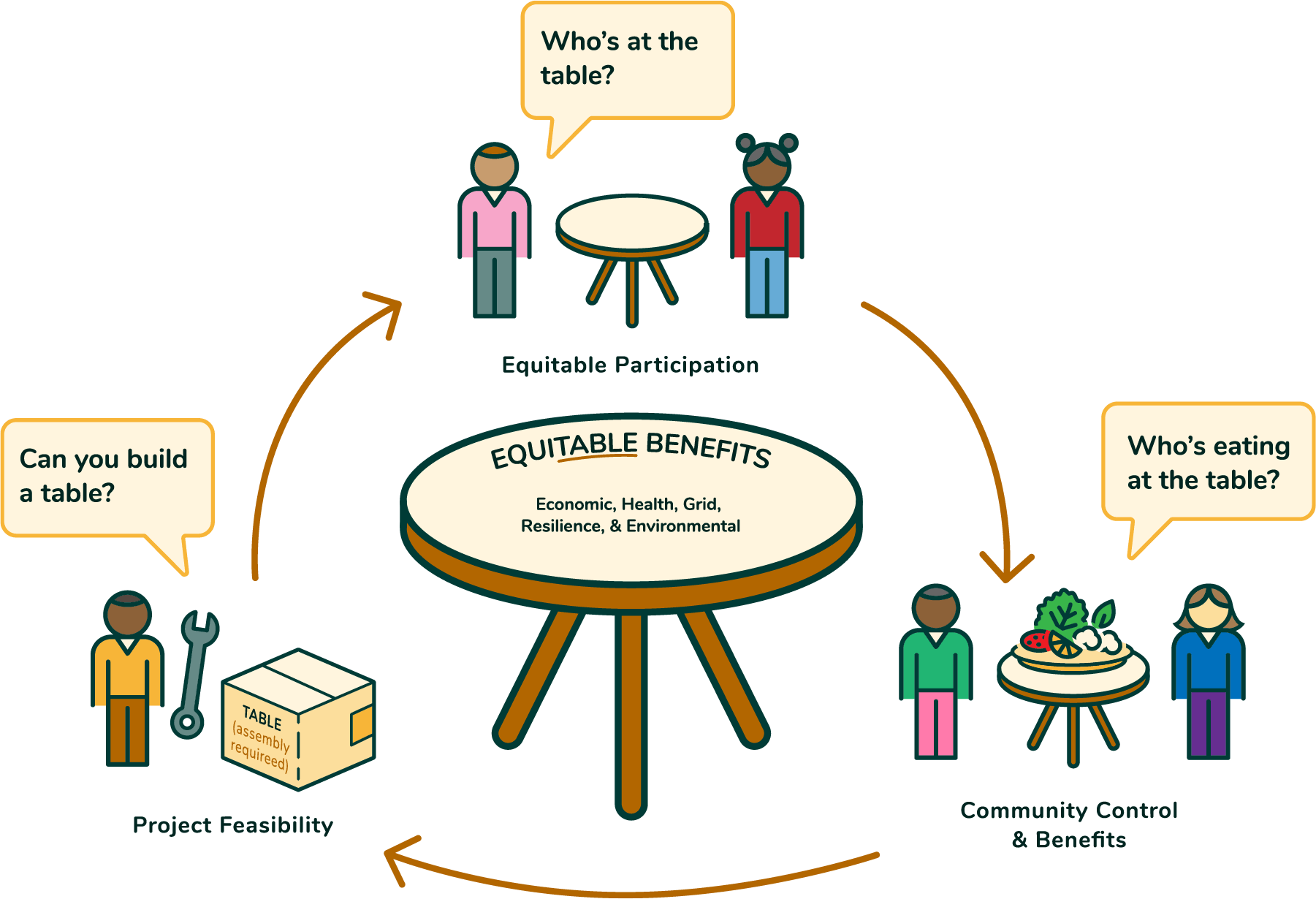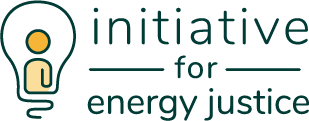The case studies offer three key lessons for community energy policies consistent with energy justice:
- community participation in policy development and program design;
- energy pricing and valuation structures that make projects viable and attractive to customers and developers; and
- sustainable business models that enable community decision-making and control over customer-generated energy resources while balancing the need to target priority customers and provide consumer protection.
Lesson 1: Community Participation
In both the California and New York contexts, community participation was a crucial element. Adequate community participation requires that voices are engaged, heard, and genuinely responded to. For example, while stakeholders in New York felt as though the final outcome did not tie back to overarching goals and community input, to some degree California’s CSGT program represents progress in soliciting comments from community representatives on overarching goals and referencing those goals later on during the process.
Lesson 2: Pricing and Valuation
Both the California and New York programs struggle with pricing solar in their community energy policies. First, at a basic level, the pricing structure is a threshold issue that will determine if any projects are economically viable under the policy. The outcome in New York appears to have provided more certainty that at least some projects can get built, while that is a matter still to be determined in California. Second, the valuation of energy from certain types of projects is also a potential driver for equitable non-energy benefits such as public health, community wealth, and other social benefits. However, both California and New York have yet to include value adders or incentives for those projects that drive more community benefits than other projects.
Lesson 3: New Business Models
The case studies present lessons on developing and transitioning to sustainable business models for community self-generation of renewable energy. First, these experiences highlight the need to adapt the conventional utility model of centralized energy production sold as a commodity to customers to one where individuals and communities have agency, governance, and decision-making around their own production of clean energy. Second, considering equity means both ensuring that programs include and provide benefits to specific target customer groups such as low-income households, while ensuring protection from deceptive business practices.
Reflection on Using the Energy Justice Scorecard for Community Energy Policy
Applying the Energy Justice Scorecard to this arena highlights a key balancing issue in the community energy realm: How can community energy policy prioritize robust benefits for traditionally marginalized utility customers while also making community energy projects feasible for development? Questions 1-4 help to analyze the inclusivity of process and benefits, while question 5 demonstrates the importance of project feasibility. If projects cannot get built, no one will see purported benefits. But without meaningful community participation and evaluating disparate historical harms and present burdens, projects could get built in ways that further exacerbate inequities.
The Scorecard questions help to identify underlying elements that should be considered in designing an equitable community solar policy:
(1) Process: Have marginalized communities participated meaningfully in the policymaking process with sufficient support?
- In the community energy context, this could be analyzed in regards to legislative policymaking, but is more likely to have more applicability in terms of regulatory policymaking in a state-level public service/utility commission proceeding. However, this could also occur at the municipal level or through a utility’s own internal process in some cases.
- Key considerations include whether accessibility, income, language, or other barriers are addressed to ensure community members can participate; whether there is financial compensation for time spent contributing to the policymaking; and whether the ultimate policy decision-makers have an obligation to respond to public comments and state why they have or have not been addressed.
- Public understanding of the terms and concepts being used in a policymaking forum is critical for meaningful engagement, so key concepts should be explained via print, online, and/or in-person meetings, including virtual net energy meeting, tariffs, power purchase agreements, and procurement mechanisms.
(2) Restoration: Does the policy aim to remedy prior and present harms faced by communities negatively impacted by the fossil-fuel based energy system?
- A key mechanism for ensuring such harms are considered is a mapping tool based in large part on disparate pollution burdens, such as the CalEnviroScreen tool developed by the California EPA. The US EPA has a similar tool, and various states are also developing their own. Such a tool can allow for geographic targeting of participation, benefits, and incentives.
- A robust community solar policy would consider mechanisms for prioritizing projects that reduce pollution in these neighborhoods (such as by reducing demand for nearby fossil-fuel plants) in addition to other community benefits from renewable projects.
(3) Decision-making: Does the policy center the decision-making of marginalized communities?
- The policy should promote community self-determination, governance, and agency through cooperative ownership or control of renewable energy assets. Moreover, it should support the efforts of community-based organizations that serve marginalized populations to advance energy democracy for their communities.
- Policy mechanisms such as application prioritization, financial adders, and other incentives can promote equitable community-based projects.
(4) Benefits: Does the policy center economic, social, or health benefits for marginalized communities?
- The above questions build upon each other and lead to this focus on robust benefits to marginalized community beyond just renewable energy itself, in addition to prioritizing fossil-fuel harmed communities and community decision-making.
- Equitable community solar policies can advance deep impacts with requirements and designs that advance meaningful bill savings; family-sustaining jobs training; community wealth-building and investment opportunities; cleaner air from avoided fossil fuel extraction and generation; reduced fires, costs, and power shutoffs from less reliance on transmission lines; and resilience from power outages through pairing solar with storage.
(5) Access: Does the policy make energy more accessible and affordable to marginalized communities?
- As mentioned above, a fundamental issue here is ensuring that pricing and valuation structures making projects feasible and attractive both for developers (ideally community-based ones) and customers. In addition to compensation methods based on retail rates, programs could guarantee a certain amount of savings for customers, or payments to developers.
- Many other mechanisms could be considered. Minimum participation requirements can ensure projects must include a certain percentage of low-income customers but should be balanced with economic incentives to make sure projects can still be financed and constructed. Various groups have developed new methods of evaluating the likelihood a customer pays bills, and more equitable approaches should be utilized as opposed to conventional credit checks. Allowing the limited participation of anchor commercial customers (such as schools, nonprofit organizations, or municipal customers) in a community solar project might make participation more accessible or affordable to residential customers.
Equitable Community Solar Framework
In light of the case study lessons and Scorecard-based analysis of community solar programs, the elements of good community solar policy becomes more clear. First, instead of simply defining community solar, we can propose a definition of what equitable community solar looks like. Equitable community solar (1) allocates energy and benefits from one solar system to multiple customers via viable economic incentives, (2) intentionally engages and centers participation of marginalized populations, and (3) prioritizes local community self-generation and ownership of energy resources.
The overall goal of an equitable community solar policy is the achievement of robust, justice-oriented impacts, as determined by an equitable process. In sum, from the advocacy, writings, and participation of environmental, economic, and social justice communities, such a process will likely identify, at a minimum, potential outcomes such as equitable economic, health, grid, resilience, and environmental benefits. As emphasized previously, local communities, advocates, and policymakers must go through as process of identifying goals, and then design a program to achieve them.
The definition of equitable community solar laid out above helps illuminate key program objectives for an equitable community solar policy that will ultimately lead to the overall goal of robust, justice-oriented impacts. And the high-level objectives give structure, direction, and purpose for underlying mechanisms in the policy design. Each element of the definition can be summarized generally into three objectives:
- Project Feasibility – allocates energy and benefits from one solar system to multiple customers via viable economic incentives
- Equitable Participation – intentionally engages and centers participation of marginalized populations
- Community Control – prioritizes local community self-generation and ownership of energy resources

Diagram 12: Equitable Community Solar Framework
The three program objectives can also be framed as: 1) can projects get built?, 2) are they designed to include marginalized communities?, and 3) are they designed to deliver robust economic, health, and social benefits by allowing communities to own and control energy resources? Or in other words: 1) can you build a table?, 2) who’s at the table?, and 3) who’s eating at the table?
By delving into the questions that the Energy Justice Scorecard asks, not only does it become evident that we can approach policies in such a way that advances both an equitable and rapid transition to renewables – we must. It is our moral imperative.

